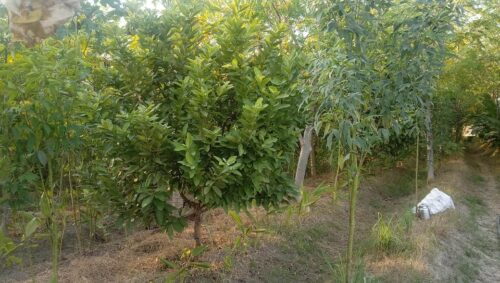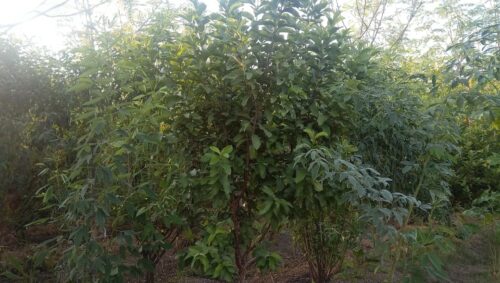Despite being an agricultural country, India has seen a major shift from farming to industrialisation in recent years. One of the major reasons for this has been the economic hardship faced by farmers caused by the imbalance between investment and return. However, Phool Kumar of Bhaini Mato village in Rohtak has proven that this can be overcome with hard work.
The farmer has earned Rs 2.5 lakh from a one-acre plot of his land this year, and believes it’s possible to earn in lakhs from farming, as long as farmers do it right and perseveringly.
An average rural farmer
Living in the agricultural state of Haryana, Phool Kumar has been tending to a farm land for the last 22 years. Having studied till Class 10, he shifted to tilling his 3.5 acres of land in 1998.

Speaking with The Better India, he said that as a cotton cultivator, his journey had been full of ups and downs. He employed methods of chemical farming for a successful output, but would end up reaping more harm than gain from the practice.
“The cost of chemicals used to be high and the income never matched up in proportion. Fertiliser spray would alone cost up to Rs 1,25,000 annually, whereas the cotton was sold for only Rs 1,15,000. Naturally, it became difficult to sustain my family,” he said.
To top this, he saw negative effects of chemicals causing rampant deaths in the village. According to Phool, three to four people died due to pesticide consumption in his village every year.
So like many others, he too was finding farming to be a lost cause.
But as luck would have it, Phool found serendipity in a telecast of Rajiv Dixit’s organic farming methods.
“From him, I heard for the first time that farming without any urea is also possible,” he said.
Discovering a new way
Phool Kumar had found a new ray of hope, but had no training in its methods. Unfazed, he began conducting a little local research in 2010. Returns from his current produce looked grim, but education in organic farming began looking promising. So he remained invested in agriculture, but also got a job as a bus driver in the Delhi Transport Corporation (DTC) to support his family.
In 2014, he had an epiphany.
Phool said that over the four years of research, he realised that a job would only support his household, but if he worked hard enough on his land, he would be able to feed clean and healthy food to himself, his family, and many other homes.
“So I decided to quit the DTC job with the thought that I would now do something to serve society and nature,” he said.
He started switching to organic methods of farming, confirming each strategy by way of trial and error. In 2017, Phool Kumar attended a workshop by Subhash Palekar, who is considered the father of zero budget natural farming (ZBNF), which was organised in Panchkula.
The five-layer farming model
“Palekar sir said that an acre of land can potentially earn us Rs 6 to 12 lakh, but I didn’t believe him. I had been farming organically for seven years and had suffered many losses. But he identified exactly where I was going wrong and helped me rectify it. This was when I received a map of the ‘jungle method’ from him,” he said.
After training, Phool Kumar started the Five Layer Farming Model, as the ‘jungle method’ is popularly known, on his farm in August 2017.
In line with the model, Phool planted 54 lemons, 133 pomegranates, 170 bananas and 420 drumstick trees on a quarter acre of his land.

None of the plants were propagated from saplings, and fresh seeds were used in the process instead. This year, he will add 420 pepper trees and 420 grape vines to the model as well.
“This is a self-sustaining method of farming based on co-cropping of plants. It takes two to three years to develop fully but you start earning from the first year itself. Additionally, planting from seeds reduces the initial costs of the saplings,” he added.
His first layer is now three years old and has seasonal vegetables and spices like bitter gourd, chilli, tomato, turmeric, ginger and more.
In the second layer, he planted fruiting trees like guava, sweet lime, and custard apple on another acre of land. This model is still in its developmental stage.
This year he will plant his third model on the remaining acre.
This farming method is fed by cow dung and cow urine, which requires minimal investment. As each layer starts getting older, its output begins increasing and thus one receives a higher income each year.
Phool Kumar says that he had earned Rs 1.5 lakh on one acre of land from the first year’s season. This year, this revenue increased to Rs 2.5 lakh.

He now has four cows and a heifer. “It is customary for us to consume fresh milk and ghee at home. Additionally, the manure for our fields is also supplied by this cattle,” he said.
By now, Phool Kumar’s farming story has become such a local success that he does not need to take his vegetables and fruits to the market. He claims that customers themselves come to his house or place pre-orders to buy his produce.
“In my experience, if a farmer chooses the right methods of farming and works hard on them, he can earn in lakhs. For the last three years, my wife and I have been completely dedicated to our farm without any distractions. All this bounty is testimony to our efforts,” he said.
Read this story in Hindi here.
Edited by Divya Sethu
No comments:
Post a Comment